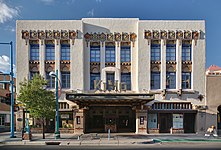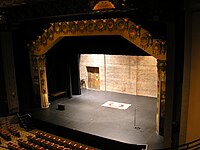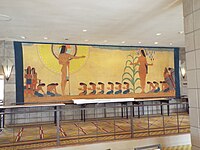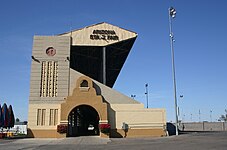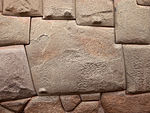
The Southwestern United States, also known as the American Southwest or simply the Southwest, is a geographic and cultural region of the United States that includes Arizona and New Mexico, along with adjacent portions of California, Colorado, Nevada, Oklahoma, Texas, and Utah. The largest cities by metropolitan area are Phoenix, Las Vegas, El Paso, Albuquerque, and Tucson. Before 1848, in the historical region of Santa Fe de Nuevo México as well as parts of Alta California and Coahuila y Tejas, settlement was almost non-existent outside of Nuevo México's Pueblos and Spanish or Mexican municipalities. Much of the area had been a part of New Spain and Mexico until the United States acquired the area through the Treaty of Guadalupe Hidalgo in 1848 and the smaller Gadsden Purchase in 1854.
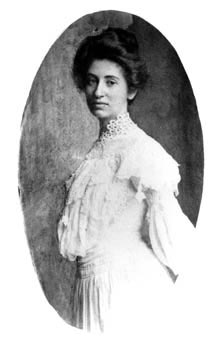
Mary Elizabeth Jane Colter was an American architect and designer. She was one of the very few female American architects in her day. She was the designer of many landmark buildings and spaces for the Fred Harvey Company and the Santa Fe Railroad, notably in Grand Canyon National Park. Her work had enormous influence as she helped to create a style, blending Spanish Colonial Revival and Mission Revival architecture with Native American motifs and Rustic elements, that became popular throughout the Southwest. Colter was a perfectionist, who spent a lifetime advocating and defending her aesthetic vision in a largely male-dominated field.

The KiMo Theatre is a theatre and historic landmark located in Albuquerque, New Mexico on the northeast corner of Central Avenue and Fifth Street. It was built in 1927 in the extravagant Pueblo Deco architecture, which is a blend of adobe-style Pueblo Revival architecture building styles, decorative motifs from indigenous cultures, and the soaring lines and linear repetition found in American Art Deco architecture.

Trost & Trost Architects & Engineers, often known as Trost & Trost, was an architectural firm based in El Paso, Texas. The firm's chief designer was Henry Charles Trost, who was born in Toledo, Ohio, in 1860. Trost moved from Chicago to Tucson, Arizona in 1899 and to El Paso in 1903. He partnered with Robert Rust to form Trost & Rust. Rust died in 1905 and later that year Trost formed the firm of Trost & Trost with his twin brother Gustavus Adolphus Trost, also an architect, who had joined the firm as a structural engineer. Between 1903 and Henry Trost's death on September 19, 1933, the firm designed hundreds of buildings in the El Paso area and in other Southwestern cities, including Albuquerque, Phoenix, Tucson, and San Angelo.

The historic U.S. Route 66 ran east–west across the central part of the state of New Mexico, along the path now taken by Interstate 40 (I-40). However, until 1937, it took a longer route via Los Lunas, Albuquerque, and Santa Fe, now roughly New Mexico State Road 6 (NM 6), I-25, and US 84. Large portions of the old road parallel to I-40 have been designated NM 117, NM 118, NM 122, NM 124, NM 333, three separate loops of I-40 Business, and state-maintained frontage roads.

Gallup station is an Amtrak train station at 201 East Highway 66 in downtown Gallup, New Mexico. It is the second busiest station in the state, with more than 16,000 boardings and alightings in 2014.

Maya Revival is a modern architectural style popular in the Americas during the 1920s and 1930s that drew inspiration from the architecture and iconography of pre-Columbian Mesoamerican cultures.
Marie Zieu Chino (1907–1982) was a Native American potter from Acoma Pueblo, New Mexico. Marie and her friends Lucy M. Lewis and Jessie Garcia are recognized as the three most important Acoma potters during the 1950s. Along with Juana Leno, they have been called "The Four Matriarchs" who "revived the ancient style of Acoma pottery." The inspiration for many designs used on their pottery were found on old potsherds gathered to use for temper. Together they led the revival of ancient pottery forms including the Mimbres, Tularosa and other various cultures in the Anasazi region. This revival spread to other potters who also accepted the old styles, which led to new innovative designs and variations of style and form.
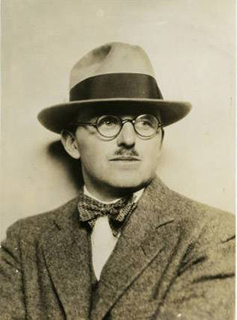
John Gaw Meem IV was an American architect based in Santa Fe, New Mexico. He is best known for his instrumental role in the development and popularization of the Pueblo Revival Style and as a proponent of architectural Regionalism in the face of international modernism. Meem is regarded as one of the most important and influential architects to have worked in New Mexico.

The Pueblo Revival style or Santa Fe style is a regional architectural style of the Southwestern United States, which draws its inspiration from Santa Fe de Nuevo México's traditional Pueblo architecture, the Spanish missions, and Territorial Style. The style developed at the beginning of the 20th century and reached its greatest popularity in the 1920s and 1930s, though it is still commonly used for new buildings. Pueblo style architecture is most prevalent in the state of New Mexico; it is often blended with Territorial Revival architecture.

Helen Hardin was a Native American painter. She started making and selling paintings, participated in the University of Arizona's Southwest Indian Art Project and was featured in Seventeen magazine, all before she was 18 years of age. Creating art was a means of spiritual expression that developed from her Roman Catholic upbringing and Native American heritage. She created contemporary works of art with geometric patterns based upon Native American symbols and motifs, like corn, katsinas, and chiefs. In 1976 she was featured in the PBS American Indian artists series.
Roy Place was a Tucson, Arizona architect.
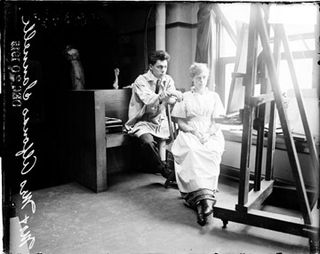
Alfonso Iannelli was an Italian-American sculptor, artist, and industrial designer.

Harrison Begay, also known as Haashké yah Níyá was a renowned Diné (Navajo) painter, printmaker, and illustrator. Begay specialized in watercolors, gouache, and silkscreen prints. At the time of his death in 2012, he was the last living, former student of Dorothy Dunn and Geronima C. Montoya at the Santa Fe Indian School. His work has won multiple awards and is exhibited in museums and private collections worldwide and he was among the most famous Diné artists of his generation.

The Mission Revival style was part of an architectural movement, beginning in the late 19th century, for the revival and reinterpretation of American colonial styles. Mission Revival drew inspiration from the late 18th and early 19th century Spanish missions in California. It is sometimes termed California Mission Revival, particularly when used elsewhere, such as in New Mexico and Texas which have their own unique regional architectural styles. In Australia, the style is known as Spanish Mission.

Territorial Revival architecture describes the style of architecture developed in the U.S. state of New Mexico in the 1930s. It derived from New Mexico vernacular Territorial Style, an original style from Santa Fe de Nuevo México following the founding of Albuquerque in 1706. Territorial Revival incorporated elements of traditional regional building techniques with higher style elements. The style was intended to recall the Territorial Style and was extensively employed for New Mexico state government buildings in Santa Fe.

Ramona Sakiestewa is a contemporary Hopi Native American artist who lives and works in Santa Fe, New Mexico. Sakiestewa is renowned for her tapestries, works on paper, public art, and architectural installations.
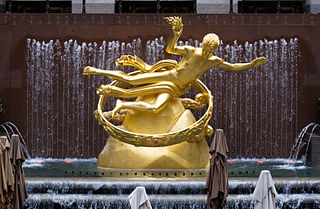
The Art Deco style, which originated in France just before World War I, had an important impact on architecture and design in the United States in the 1920s and 1930s. The most notable examples are the skyscrapers of New York City, including the Empire State Building, Chrysler Building, and Rockefeller Center. It combined modern aesthetics, fine craftsmanship, and expensive materials, and became the symbol of luxury and modernity. While rarely used in residences, it was frequently used for office buildings, government buildings, train stations, movie theaters, diners and department stores. It also was frequently used in furniture, and in the design of automobiles, ocean liners, and everyday objects such as toasters and radio sets.
Edward Alfred Harrison, known as E. A. Harrison, was an American architect who worked as a staff architect for the Atchison, Topeka & Santa Fe Railway, with offices in Topeka, Kansas, and later in Chicago, Illinois.
Max Flatow was an American architect who worked for most of his career in Albuquerque, New Mexico. Flatow got his start designing buildings for the Manhattan Project in Los Alamos before opening his own firm in Albuquerque in 1947. Joined by Jason Moore in 1948, the firm became one of New Mexico's largest and was instrumental in popularizing modern architecture throughout the state. Some of their most influential commissions included the Simms Building and the University of New Mexico College of Education.
